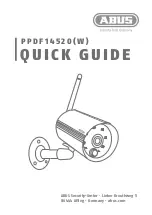
If the indicator needle cannot be cen-
tered even after rotating the aperture
ring as far as it will go, the exposure
must be adjusted by rotating the CdS
Prism Finder shutter speed dial. If the
indicator needle is too high, set the
shutter speed dial to a shorter (“faster”)
speed; it too low, set to a longer
(“slower”) speed. After adjusting the
shutter speed dial of the CdS Prism
F i n d e r , i f t h e i n d i c a t o r n e e d l e i s s l i g h t l y
off-center, make final adjustments with
the aperture ring.
Whenever changing the setting of the
shutter speed dial of the CdS
Prism
Finder to adjust for exposure, do not
forget to set the shutter speed dial of
the camera body to the same setting.
7.
After the above steps have been
completed (centering of the indicator
needle), exposure setting should be
correct, and the picture may be taken.
Aperture Priority Method
1.
When desiring to set the aperture
first set the aperture ring to the de-
sired f/stop, and then adjust for ex-
posure by rotating the shutter speed
dial of the finder until the indicator
needle is centered between the
brackets
2.
Check the setting of the finder shut-
ter speed dial, and
set the same set-
ting on the shutter speed dial of the
camera.
*When adjusting for exposure with the
CdS Prism Finder shutter speed dial,
do not use any intermediate positions,
but always set the dial to a click-stop
If the indicator needle cannot be per-
fectly centered with the shutter speed
dial at a click-stop position, make final
adlustments with the aperture ring.
The brackets visible in the viewfinder
not only indicate correct exposure, but
are also notched to indicate
f/stops
(see diagram) to simplify exposure
compensation for unusual lighting.
When the exposure meter switch is set
to OFF, the indicator needle rests at
the bottom position.
Correct Exposure 0
42
















































